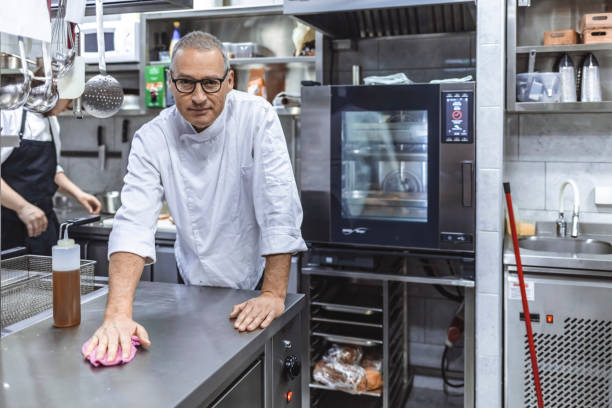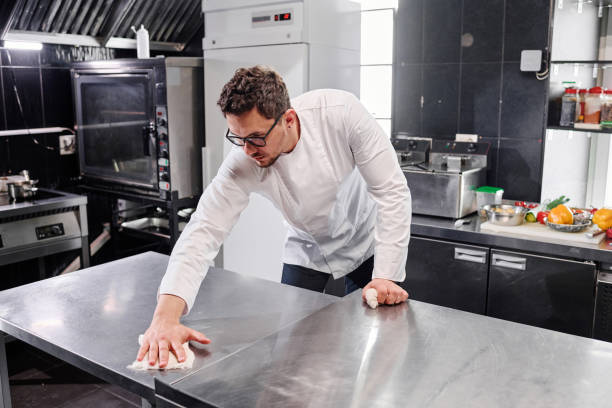False hygiene myths in the food industry
We will review what are the false myths that revolve around hygiene in the food industry.

In this article, we review what are the false myths that revolve around hygiene in the food industry.
Over the years, we have formed the collective imagination about hygiene in the food industry based on ideas that are not entirely true.
Facts such as, for example, applying a disinfectant before having cleaned the surfaces often endanger food safety and, therefore, food safety.
Next, we review what are the most common false myths about hygiene in the food industry:
False hygiene myth 1: Believing that sanitizing is the same as cleaning
Sanitation is a prerequisite included in the cleaning and disinfection plan, which includes the order and organization of the facilities, besides their cleaning and disinfection.
Instead, cleaning comprises simply removing organic matter or traces of dirt from surfaces.
In short, sanitation goes much further and implies keeping the facilities completely decontaminated and ready for use.
False hygiene myth 2: Thinking that any disinfectant is valid to eliminate all kinds of germs
Although disinfectants are specially designed to kill harmful microorganisms, there may be cases of bacteria, viruses, or fungi that create resistance to these products. It is what we know as microbial resistance.
Sometimes this problem is solved by combining the use of disinfectants with different formulations.
Another aspect to consider during disinfection in the food industry is the possibility that biofilm has formed. In these cases, we will use specific products for their detection and elimination.
All disinfectants used in the food industry must have the Hospital grade and, preferably, have efficacy against bacteria, fungi, yeasts, or viruses.
False hygiene myth 3: Affirm that multipurpose products contribute to economic savings
Contrary to what the collective imagination dictates, products such as, for example, 2-in-1 detergents and disinfectants can considerably complicate cleaning processes and multiply the costs derived from this action.
In any food industry, it is important to be aware of the hygiene needs of each space or facility.
In areas that require more demanding hygiene, we will use specific detergents and disinfectants, since multipurpose products would be insufficient.
False hygiene Myth 4: Believing that using a greater amount of product provides better cleaning results
`
Incorrect dosing of cleaning and disinfection products is a real problem and often puts hygiene results at risk.
To prevent this, we must carefully read the technical data sheet of the product in question and consult the dosage recommendations for each use.
Another of the most common mistakes is applying the most powerful detergents and disinfectants in the areas of least risk ; this ends up producing long-term microbial resistance.
False hygiene myth 5: Thinking that we can use HA-registered disinfectants in the presence of food
The main factor that differentiates hospital-grade disinfectants from those that do not have this recognition is that the former is suitable for application in environments that work with food.
However, this does not mean that we can apply the disinfectant in the presence of food.
In addition, it is important to respect the application times. Allowing between 10 and 30 minutes to pass after applying the product so that it dissipates or evaporates completely.
False myth 6: Thinking that handling food with gloves is unhygienic
On many occasions, we are alarmed when we see a professional cleaning company handling food directly with their hands.
However, this action should not be seen as a lack of hygiene; Several studies show that it is safer to work without gloves and to constantly sanitize your hands .
And it is that when we use the gloves we get a false sense of security. This leads us to stretch the use of these products more than necessary and ends up leading to cross-contamination problems.
False hygiene myth 7: Believing that germs cannot survive on dry surfaces
While moisture is the perfect ingredient for the formation and reproduction of bacteria or fungi. These microorganisms can also survive on dry surfaces.
In this sense, we recommend using alcohol-based disinfectants, since they evaporate easily.
Finally, we ensure that the professionals in charge of cleaning and disinfection in the food industry have the training.
